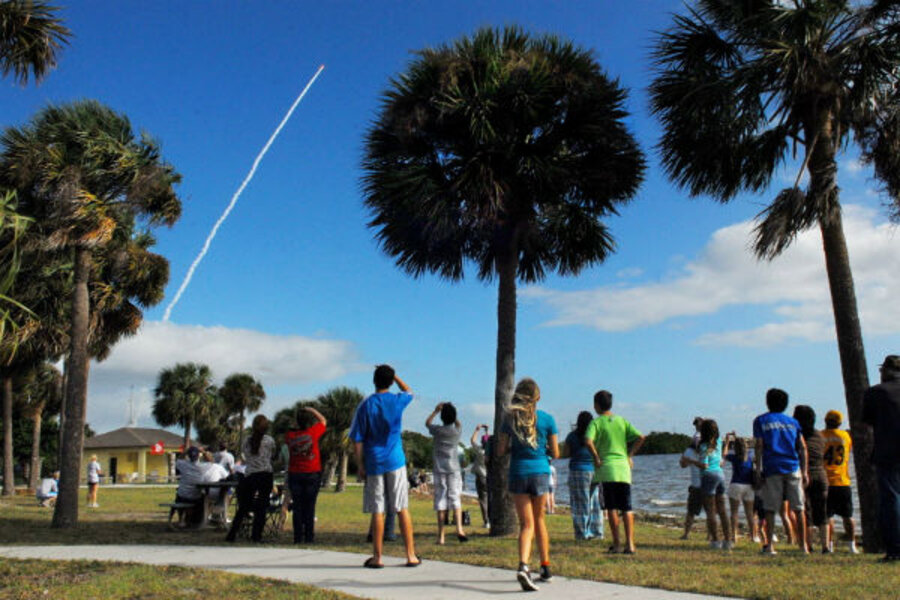Mars: NASA rover Curiosity taking giant leap for today’s students?
Loading...
| Philadelphia
Who of a certain age can forget the summer of Apollo 11. I was a seventh grader, and stayed up late to see the grainy black and white footage of man’s first footsteps (“one giant leap for mankind”) on the lunar surface. It was amazing. An exploration both unlike, and exactly like, every prior voyage of discovery. Men were descending from their craft and touching a foreign shore.
Men were trampling where they had never been before: a new world, this time a celestial body, and it would be an unparalleled scientific epic. It was a greater leap than prior terrestrial voyages, to be sure. But it was still man going, landing, seeing, experiencing a new territory.
Will the next generation have a similar appreciation of this week’s landing on Mars by a robotic craft, the Curiosity rover? Sending back even sharper images of an extra-terrestrial body? I hope so. What are today’s seventh graders thinking about those images beamed back from the next planet out in our solar system?
We make such voyages in a new age. We’re sending our proxy voyageurs, an engineering marvel touching and looking as the extension of real men – our voyageur prosthesis. We probe with our fantastic instruments farther and farther reaches. We touch a distant planet. Our physicists decipher inner physical space just as remarkably, as revealed in the recent confirmation of the existence of the Higgs Boson.
There are, of course, the naysayers who note the price tag of Curiosity: $2.5 billion. But there are other variables. Stimulation of imagination among another generation of earthbound scientists: incalculably high value. Perspective on our home planet: priceless.
That view from the moon, or Mars, had as much to do with inner space as the exploration of the farthest reach of our contemporary craft.
It’s always been of equal inspiration to me just to see the photo of our lovely water planet taken from the moon’s vantage point. It humbles and, potentially, unites us. There’s something incredibly piercing to the soul of humanity to see ourselves, fragmented societies that we are, sharing the habitation of a fragile ecosystem one orbital ring closer to our star from Mars.
Isn’t it the nature of exploration to bring sharper focus to the value of home, the starting point. Apollo brought scientific and engineering advancements with tremendous returns for society. No doubt, Mars exploration will do the same.
But I would want my children to remember also the view from the distance, the terrain of inner space and the potential giant leap for the ecosystem and “ethosphere” of Earth. For it is always ourselves that we find setting foot on the forlorn shore of a new world. One hopes that both the near and distant explorations advance humanity, coming and going “for all mankind” again and again.
Todd R. Nelson is Head of School at The School in Rose Valley, PA.






